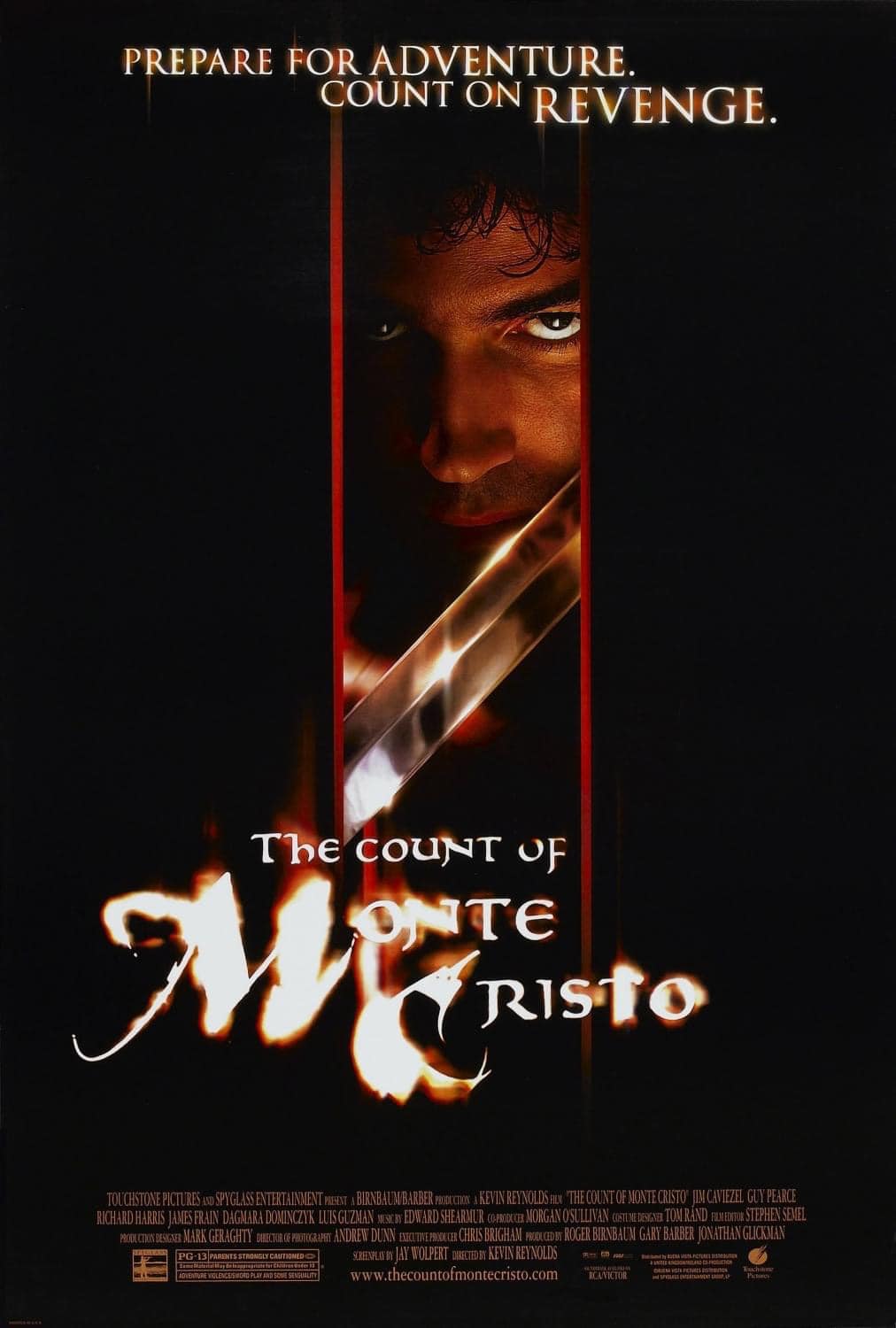The Count of Monte Cristo (2002)

Title: The Count of Monte Cristo (2002): A Tale of Revenge and Redemption
The Count of Monte Cristo (2002) is a cinematic adaptation of Alexandre Dumas’ classic novel, directed by Kevin Reynolds. The film, starring Jim Caviezel as Edmond Dantès and Guy Pearce as Fernand Mondego, delves into themes of revenge, justice, and redemption, set against the backdrop of early 19th-century France.
Plot Summary:
The story follows Edmond Dantès, a young and promising sailor who is falsely accused of treason by his envious rival, Fernand Mondego. Betrayed by those he trusted, Dantès is imprisoned in the Château d’If, a notorious fortress off the coast of Marseille. While in captivity, he meets an elderly fellow prisoner who reveals the location of a hidden treasure on the Isle of Monte Cristo. Upon escaping and discovering the treasure, Dantès reinvents himself as the wealthy and enigmatic Count of Monte Cristo. With newfound resources and a meticulous plan, he embarks on a mission to exact revenge on those who wronged him and reclaim his lost honor.

Themes and Significance:
- Revenge and Justice: The film explores the complex nature of revenge. Dantès’ quest for vengeance is driven by his desire to right the wrongs done to him, but it also raises questions about the morality and consequences of such actions. As Dantès’ plan unfolds, he discovers that revenge can be a double-edged sword, affecting not only those who wronged him but also himself.
- Transformation and Redemption: The journey of Edmond Dantès is as much about personal transformation as it is about seeking retribution. The Count of Monte Cristo evolves from a wronged man into a calculated avenger, yet his experiences force him to confront his own values and seek redemption. The film portrays how profound suffering can lead to both personal growth and self-discovery.
- Betrayal and Forgiveness: Central to the narrative is the theme of betrayal, exemplified by Mondego’s treachery and the false accusations against Dantès. Through his interactions with those who betrayed him, Dantès faces the challenge of reconciling his desire for vengeance with the possibility of forgiveness. The film highlights how betrayal can alter the course of lives and how forgiveness might ultimately lead to peace.
- Class and Power: The story also delves into issues of social class and power dynamics. Dantès’ rise from a humble sailor to a wealthy count allows him to navigate and manipulate the social hierarchy, reflecting on how wealth and status can influence one’s ability to seek justice and effect change.

Conclusion:
The Count of Monte Cristo (2002) is more than just a tale of revenge; it is a poignant exploration of human emotions and moral dilemmas. Through its gripping narrative and complex characters, the film invites viewers to reflect on the nature of justice, the impact of betrayal, and the redemptive power of forgiveness. As Dantès’ story unfolds, it serves as a reminder that while the pursuit of vengeance might seem justifiable, true redemption often lies in the resolution of one’s own inner conflicts.











